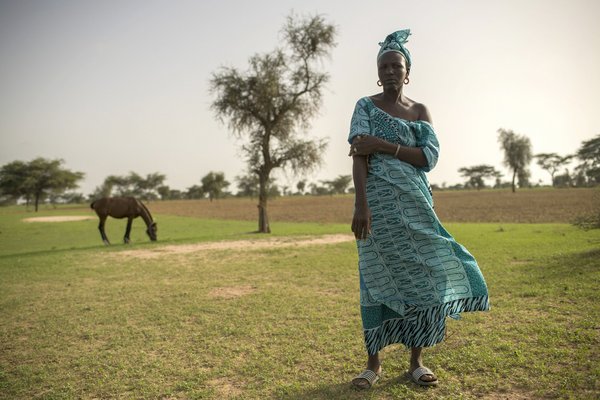- Share this article
- Subscribe to our newsletter
The number of hungry is still rising
One in nine people are hungry, according to a UN report published in mid-July 2019. An estimated 820 million people did not have enough to eat in 2018, up from 811 million in the previous year, which is the third year of increase in a row.
The annual report The State of Food Security and Nutrition in the World is released jointly by United Nations' Food and Agriculture Organization (FAO), the International Fund for Agricultural Development (IFAD), the UN Children's Fund (UNICEF), the World Food Programme (WFP) and the World Health Organization (WHO).
Economic downturn is undermining efforts to end hunger
Previous editions of this report show how conflict and climate variability and extremes are exacerbating the above trends. This year, the report shows that the uneven pace of economic recovery and continuing poor economic performance in many countries after the 2008–2009 global economic downturn are also undermining efforts to end hunger and malnutrition.
Hunger is increasing in many countries where economic growth is lagging, particularly in middle-income countries and those that rely heavily on international primary commodity trade. The report also found that income inequality is rising in many of the countries where hunger is on the rise, making it even more difficult for the poor, vulnerable or marginalised to cope with economic slowdowns and downturns.
SDG 2 nutrition targets are getting further out of reach
The pace of progress in halving the number of children who are stunted and in reducing the number of babies born with low birth weight is too slow, which also puts the SDG 2 nutrition targets further out of reach, according to the report. At the same time, adding to these challenges, overweight and obesity continue to increase in all regions, particularly among school-age children and adults. The chances of being food insecure are higher for women than men in every continent, with the largest gap in Latin America.
The authors introduce a new indicator for measuring food insecurity at different levels of severity and monitoring progress towards SDG 2 – Zero Hunger: the prevalence of moderate or severe food insecurity. This indicator is based on data obtained directly from people in surveys about their access to food in the last 12 months, using the Food Insecurity Experience Scale (FIES).
From undernutrition to malnutrition
The mean body mass index (BMI) gap between urban and rural areas is closing as BMI has been increasing more rapidly in rural areas than in urban areas according to the report. This pattern is seen worldwide, but particularly in low- and middle-income countries. The problem of malnutrition in rural areas is clearly shifting from one dominated by undernutrition to a significant problem of the multiple burden of malnutrition. Among children under five, differences in the prevalence of overweight by areas of urban or rural residence are quite small.
Southern Asia and sub-Saharan Africa suffer most
The situation is most alarming in Africa, as the region has the highest rates of hunger in the world which are continuing to slowly but steadily rise in almost all subregions. In Eastern Africa in particular, close to a third of the population (30.8 percent) is undernourished. In addition to climate and conflict, economic slowdowns and downturns are driving the rise. Since 2011, almost half the countries where rising hunger occurred due to economic slowdowns or stagnation were in Africa.
The largest number of undernourished people (more than 500 million) live in Asia, mostly in southern Asian countries. Together, Africa and Asia bear the greatest share of all forms of malnutrition, accounting for more than nine out of ten of all stunted children and over nine out of ten of all wasted children worldwide. In southern Asia and sub-Saharan Africa, one child in three is stunted.
In addition to the challenges of stunting and wasting, Asia and Africa are also home to nearly three-quarters of all overweight children worldwide, largely driven by consumption of unhealthy diets.
(FAO/IFAD/UNICEF/WFP/WHO/ile)
More information and download of The State of Food Security and Nutrition in the World report: http://www.fao.org/state-of-food-security-nutrition/en/





Add a comment
Be the First to Comment